39 refer to the diagram for a private closed economy. the equilibrium gdp is
The formula for equilibrium GDP in a mixed, open economy is. Ca + Ig + Xn + G = GDP. The level of aggregate expenditures in a mixed open economy is comprised of: Ca+Ig+Xn+G. Refer to the above diagram for a private closed economy. The multiplier is: AB/GF. other things equal, an increase in an economy's exports will: The following schedule contains data for a private closed economy. All figures are in billions. Use these data in answering the next question(s). 260 300 25. Refer to the above data. If gross investment is $10 at all levels of GDP, the equilibrium GDP will be: A) $300. B) $260. C) $220. D) $180. Answer: C 26. Refer to the above data.
Refer to the above diagram for a private closed economy. The equilibrium level of GDP is: A) $400. B) $300. C) $200. D) $100. 100. Refer to the above diagram for a private closed economy. At the equilibrium level of GDP, investment and saving are both: A) $50. B) $100. C) $20. D) $40. 101. Refer to the above diagram for a private closed economy.
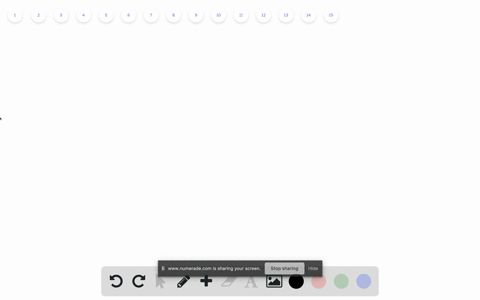
Refer to the diagram for a private closed economy. the equilibrium gdp is
14. Refer to the above diagram for a private closed economy. The equilibrium GDP is: A. $60 billion. B. $180 billion. C. between $60 and $180 billion. D. $60 billion at all levels of GDP. Answer the next question (s) on the basis of the following consumption and investment data for a private closed economy. Figures are in billions of dollars. The circular flow model is a diagram illustrating the flow of spending and income in an economy. The counterclockwise arrows represent the flow of money. The clockwise arrows represent the flow of goods and services. In a closed economy, such as the example to the left, all the spending of households and firms must equal the Refer to the diagram for a private closed economy The equilibrium GDP is A 60 from ECON 201s at Old Dominion University.
Refer to the diagram for a private closed economy. the equilibrium gdp is. 17. Refer to the above diagram which applies to a private closed economy. If gross investment is I g1, the equilibrium GDP and the level of consumption will be: A) H and HB respectively. B) J and JI respectively. C) J and JK respectively D) H and HF respectively. 18. Refer to the above diagram which applies to a private closed economy. If gross All figures are in billions. if the economy was closed to international trade, the equilibrium GDP and the multiplier would be. $350 and 5. If Carol's disposable income increases from $1,200 to $1,700 and her level of saving increases from minus $100 to a plus $100, her marginal propensity to: consume is three-fifths. Consider a closed economy without depreciation of the capital stock, without government transfer payments, and where personal income tax is the only source of government revenues. If GDP is $980 billion, consumption is $650 billion, private saving is $120 billion, Refer to the diagram for a private closed economy. Aggregate saving in this economy will be zero when: GDP is $60 billion. Actual investment is $62 billion at an equilibrium output level of $620 billion in a private closed economy. The average propensity to save at this level of output is: 0.10.
Refer to the above diagram for a private closed economy. At the equilibrium level of. GDP, investment and saving are both: A) $50. B) $100. AACSB: Analytic Blooms: Level 3 Apply Difficulty: 2 Medium Learning Objective: 11-02 Discuss the three characteristics of the equilibrium level of real GDP in a ... Transcribed image text: Real GDP (Billions) 15 Refer to the diagram for a private closed economy. The equilibrium GDP is 00:54:39 Multiple Choice O $60 billion at all levels of GDP. $60 billion. between $60 and $180 billion. O $180 billion. In a private closed economy net exports (closed) and the government sector ... (any amount you choose) to your graph, showing its impact on equilibrium GDP.
In Panels (a) and (b), equilibrium real GDP is initially Y 1. Then autonomous aggregate expenditures rise by the same amount, ΔI P. In Panel (a), the upward shift in the AE curve leads to a new level of equilibrium real GDP of Y 2; in Panel (b) equilibrium real GDP rises to Y 3. Because equilibrium real GDP rises by more in Panel (a) than in ... Refer to the above diagram for a private closed economy. The equilibrium level of GDP is: ... Refer to the above diagram for a private closed economy. At the equilibrium level of GDP, investment and saving are both: ... In a mixed open economy the equilibrium GDP is determined at that point where: ... In a private closed economy, when aggregate expenditures equal GDP:. At the $200 level of GDP, Refer to the diagram for a private closed economy. At the $200 level of GDP, A) consumption is $200 and planned investment is $50, so aggregate expenditures are $250. B) consumption is $200 and planned investment is $100, so aggregate expenditures are $300. C) consumption is $250 and actual investment is $50, so ...
Consider a closed economy in the long run. A country with a low national saving rate (as a fraction of real GDP) is likely to have A) a high growth rate because aggregate expenditure will be high out of any given income. B) either a high or low growth rate depending on the investment schedule. C) an AS curve moving continually to the right.
GDP Refer to the above diagram for a private closed economy. The equilibrium level of GDP is: $400. $100. B) $300. C) $200. D) Inflationary gap" is the amount by which: An 'v saving exceeds investment at the full-employment GDP. B) aggregate expenditures exceed the full-employment level of domestic output.
(a) Equilibrium GDP for closed economy = $400 billion. (b) See table above Equilibrium GDP for the open economy is $350 billion, $50 billion below the $400 billion equilibrium GDP for the closed economy. The $-10 billion of net exports is a leakage which reduces equilibrium GDP by $50 billion.
The table shows a private closed economy. All figures are in billions of dollars. 20. Refer to the above table. An increase in the real interest rate from 2% to 6% will: A. Decrease the equilibrium level of GDP by $200 billion B. Decrease the equilibrium level of GDP by $300 billion C. Decrease the equilibrium level of GDP by $400 billion
At equilibrium real GDP in a private closed economy: aggregate expenditures and real GDP are equal. The multiplier in this economy is. 2.5. If an additional lump-sum tax of $20 were imposed, we would expect: equilibrium GDP to fall by $30. If the marginal propensity to consume is .9 in a private closed economy, a $20 billion decline in ...
economy. The macroeconomic equilibrium is thus the point where the aggregate expenditures function intersects with this line, often referred to as the 45° line. Note however that the macroeconomic equilibrium here does not correspond to the economy being at full employment. In fact, it is possible for the economy to be in equilibrium, but be
Since the GDP is equal to Income, we can model the Spending (for now just Consumption and Investment) in the economy in terms of GDP instead of in terms of Income. In the above graph, we labeled point E as the equilibrium point and GDP* as the equilibrium level of the GDP. Let's explore why E is equilibrium.
Refer to the above diagram. The equilibrium dollar price of euros is: A. $0.625. ... Refer to the above diagram for a private closed economy. The equilibrium level of GDP is: A. $400. B. $300. C. $200. D. $100. 35. Refer to the above diagram for a private closed economy. At the equilibrium level of GDP, investment and saving are both: ...
The equilibrium level of GDP in this economy is: Answer ... Refer to the above diagram for a private closed economy. The equilibrium level of GDP is: Answer.
If planned investment is $25 billion, the equilibrium level of GDP will be: A) $600 billion ... Refer to the above graph for a private closed economy.
Refer to the above diagram for a private closed economy. Refer to the diagram for a private closed economy the equilibrium level of gdp is. Refer to the diagram for a private closed economy. True false when c ig gdp in a private closed economy s ig and there are no unplanned changes in inventories. Are 56 and 16 respectively.
Refer to the tables of information for a private closed economy. If the real interest rate is 10 percent, the equilibrium GDP will be A) $100. B) $200.
Refer to the diagram above for a private closed economy. The equilibrium GDP is: A) $60 billion B) $180 billion C) between $60 and $180 billion D) $60 billion at all levels of GDP. C. Refer to the diagram above for a private closed economy. Aggregate saving in this economy will be zero when: A) C+Ig cuts the 45 degree line B) GDP is $180 billion
D. the economy is actually operating at full employment. 3. Suppose the government purposely changes the economy's standardized budget from a deficit of 3 percent of real GDP to a surplus of 1 percent of real GDP. The government is engaging in a(n): A. expansionary fiscal policy. B. contractionary fiscal policy. C. neutral fiscal policy.
6. Refer to the above diagram for a private closed economy. At the $200 level of GDP: A. consumption is $200 and planned investment is $50 so that aggregate expenditures are $250. B. consumption is $200 and planned investment is $100 so that aggregate expenditures are $300.
(Advanced analysis) Answer the next question(s) on the basis of the following information for a private open economy. The letters Y , C, I g, X , and M stand for GDP, consumption, gross investment, exports, and imports respectively. Figures are in billions of dollars.
Refer to the above diagram. If (C + Ig) are the private expenditures in the closed economy and Xn2 are the net exports in the open economy: A) exports are negative. C) net exports are negative. B) net exports are positive. D) exports are positive. Answer: B 21. Refer to the above diagram. If net exports are Xn2, the GDP in the open economy will ...
14. Refer to the above diagram for a private closed economy. The equilibrium level of GDP is: A) $400. B) $300. C) $200. D) $100. Answer: B. Type: G Topic: 2 E: 175-176 MA: 175-176 15. Refer to the above diagram for a private closed economy. At the equilibrium level of GDP, investment and saving are both: A) $50.
Refer to the diagram for a private closed economy The equilibrium GDP is A 60 from ECON 201s at Old Dominion University.
The circular flow model is a diagram illustrating the flow of spending and income in an economy. The counterclockwise arrows represent the flow of money. The clockwise arrows represent the flow of goods and services. In a closed economy, such as the example to the left, all the spending of households and firms must equal the
14. Refer to the above diagram for a private closed economy. The equilibrium GDP is: A. $60 billion. B. $180 billion. C. between $60 and $180 billion. D. $60 billion at all levels of GDP. Answer the next question (s) on the basis of the following consumption and investment data for a private closed economy. Figures are in billions of dollars.
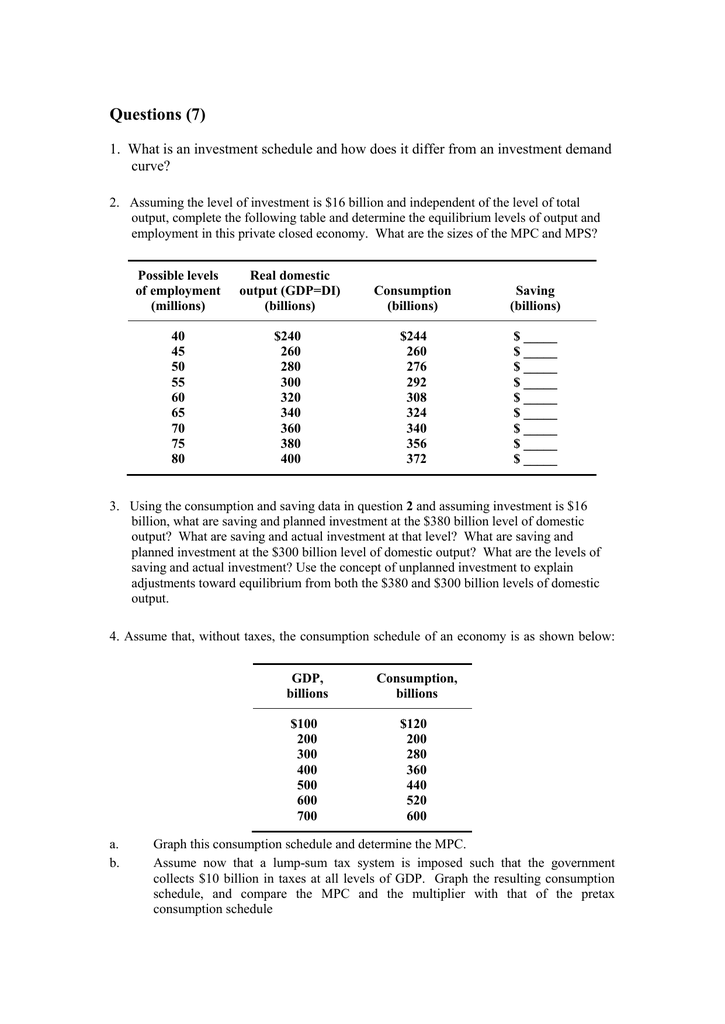

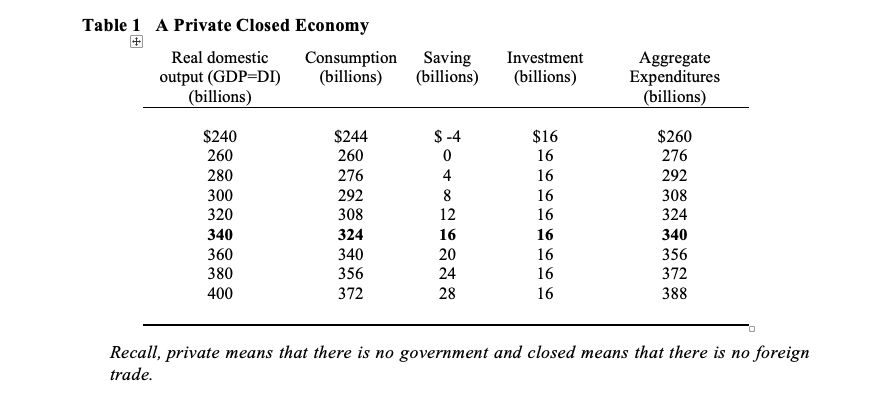

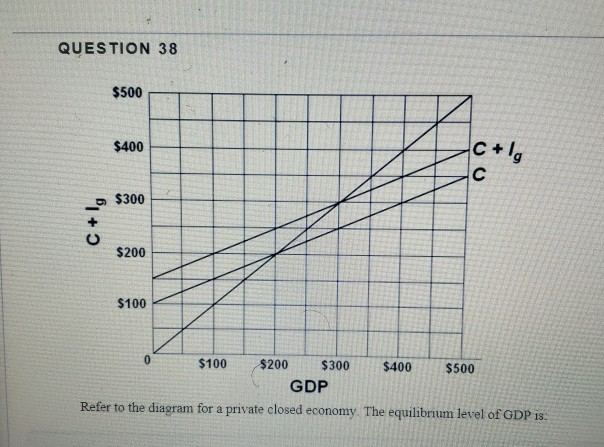
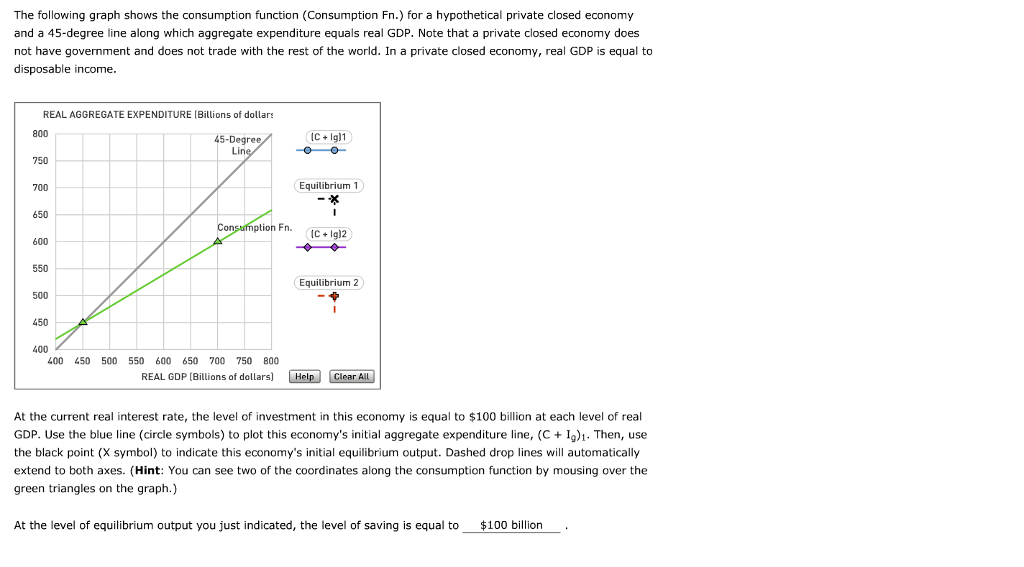



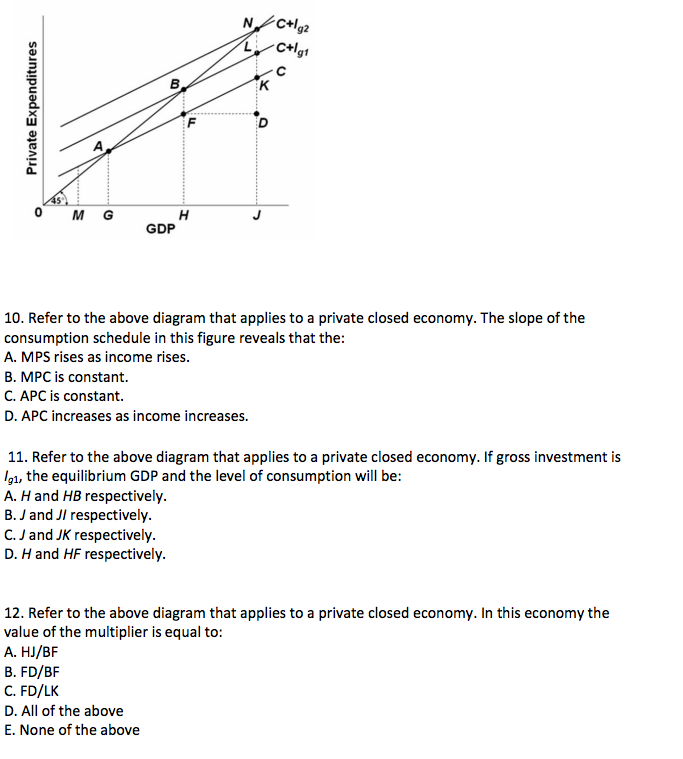
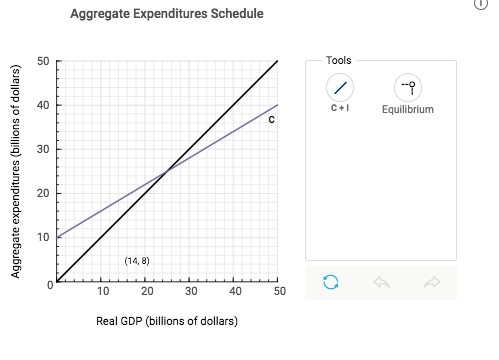


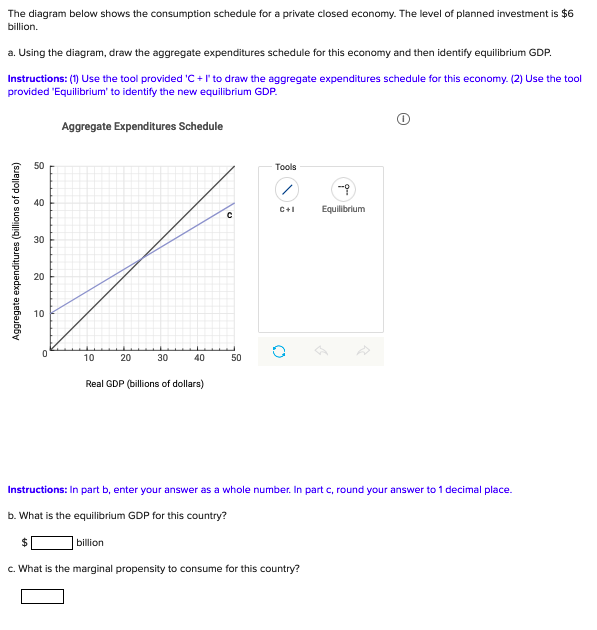
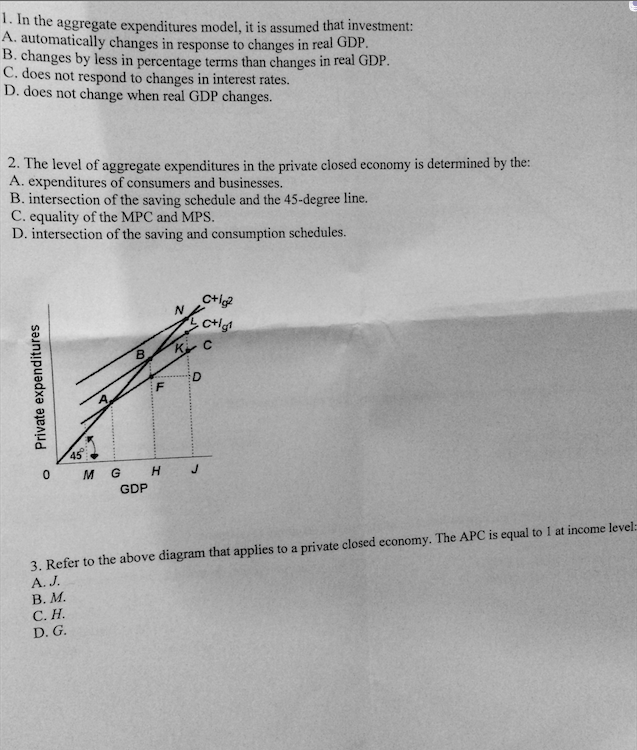



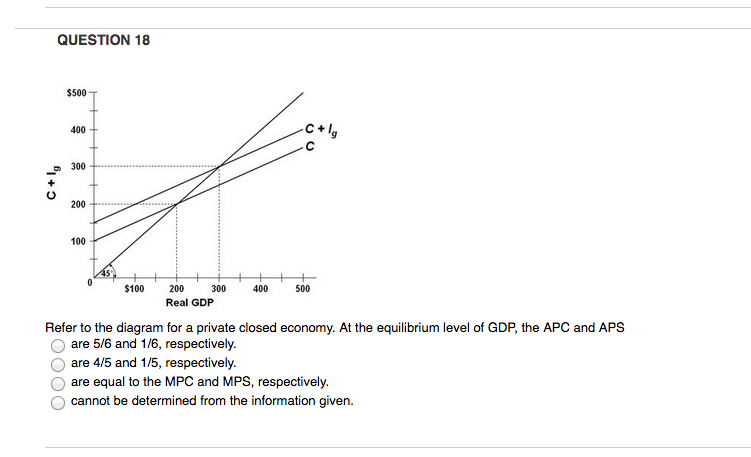
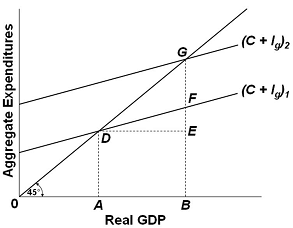
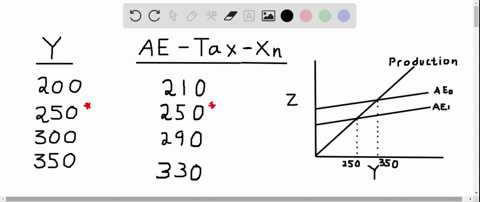
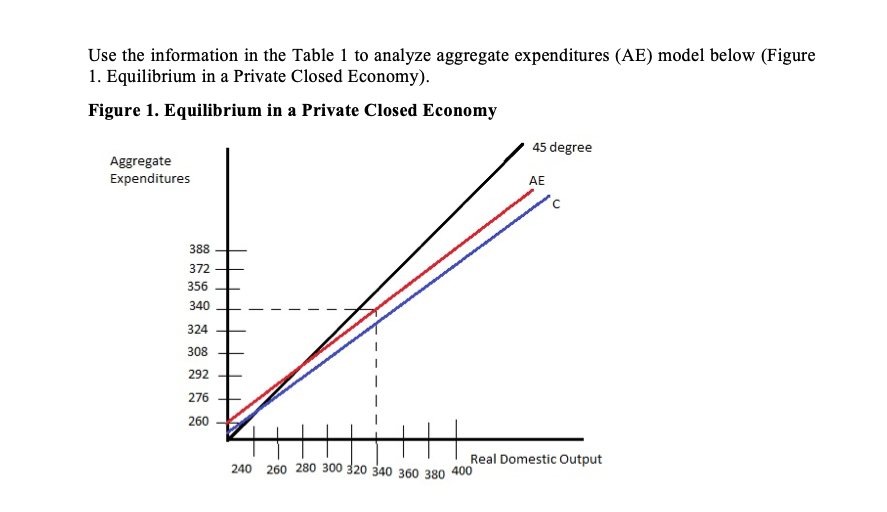
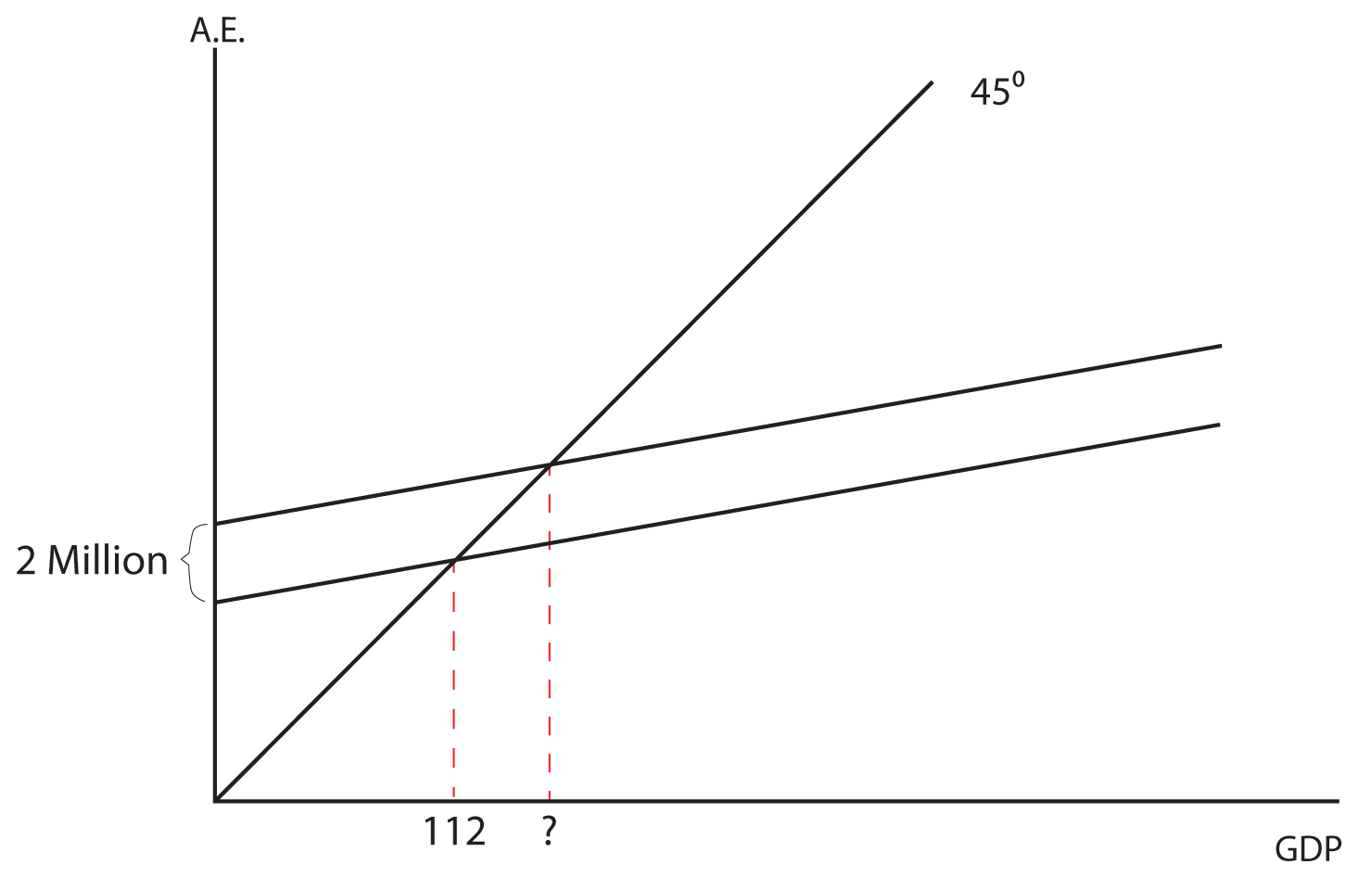


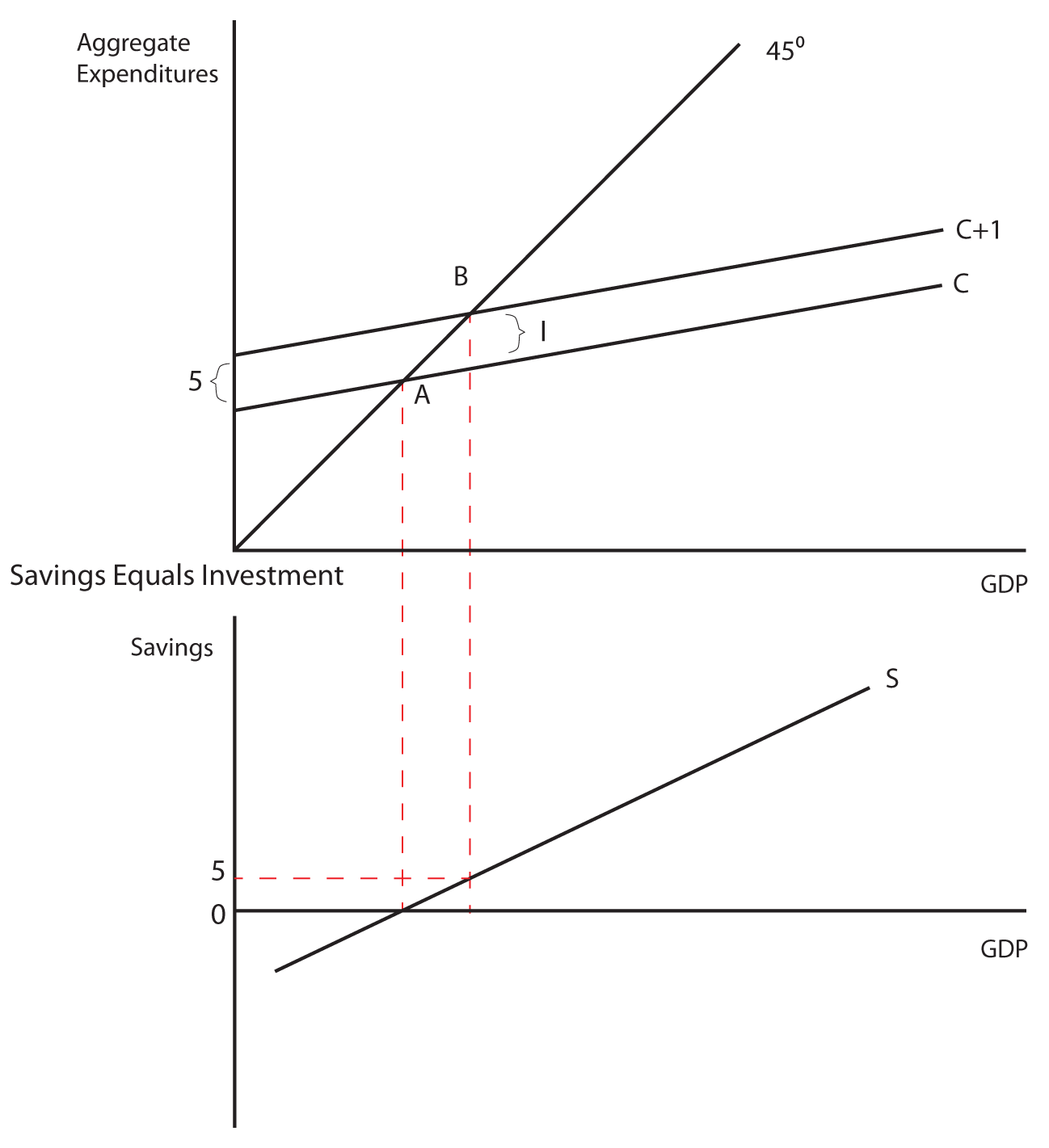



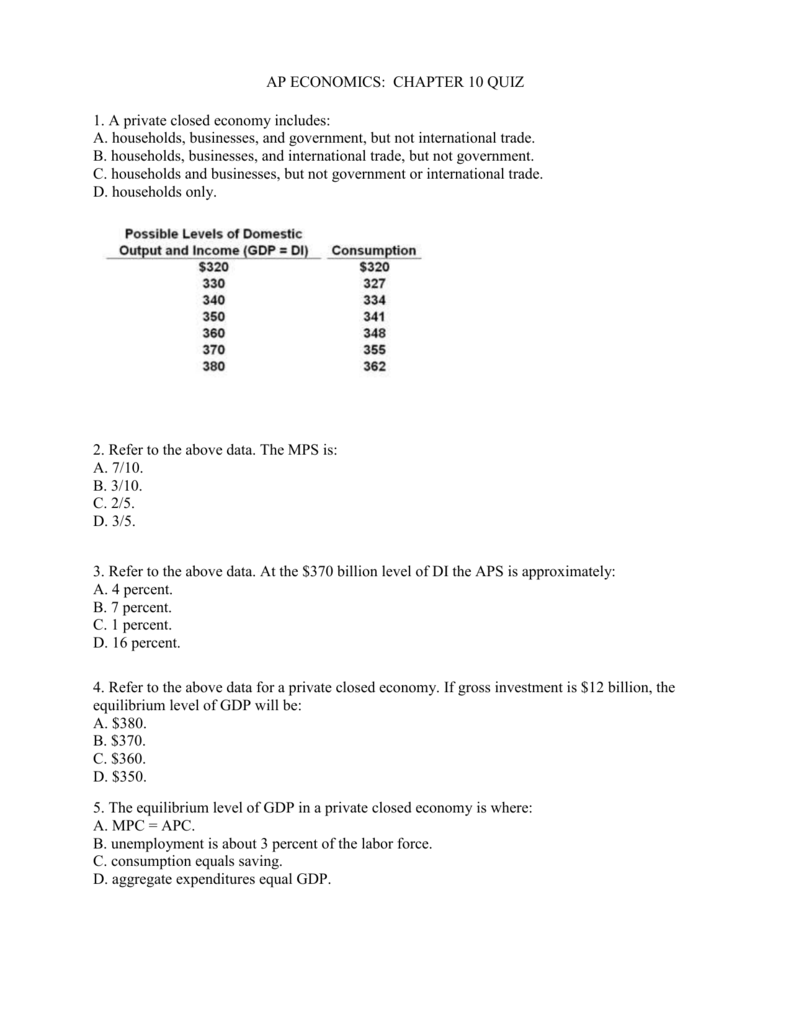
0 Response to "39 refer to the diagram for a private closed economy. the equilibrium gdp is"
Post a Comment